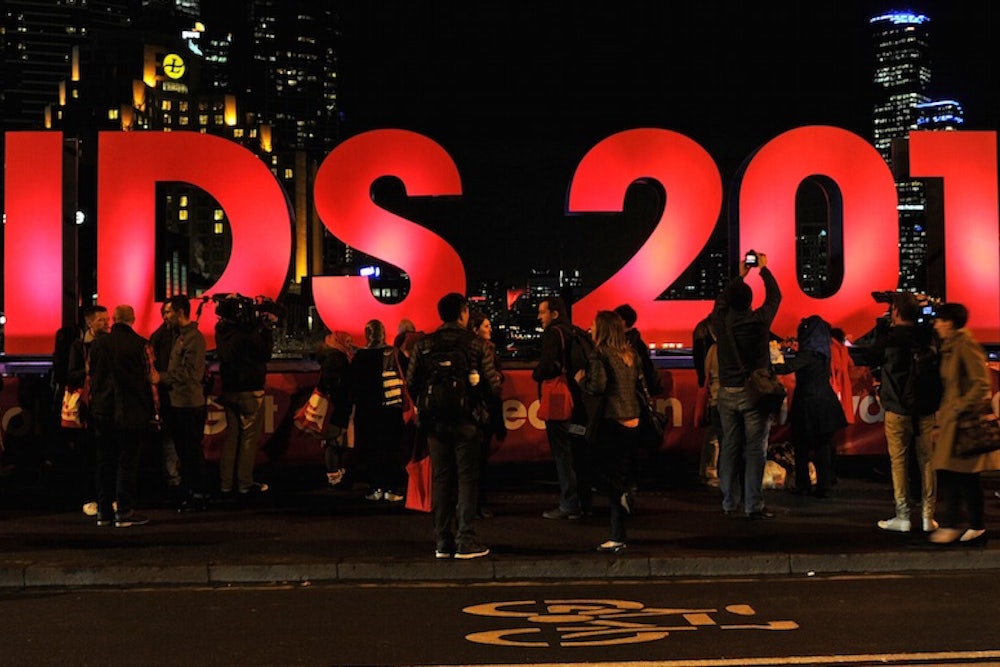In a report marking World Aids Day on Dec. 1, the advocacy organization ONE announced that we are reaching “the beginning of the end” of the disease: For the first time, “the world added more people last year to life-saving AIDS treatment than the number of people who became newly infected with HIV in the same year.”
But of the 1.2 million Americans living with HIV only 37 percent are taking medications, and 1 in 7 are unaware that they are HIV positive, according to the Centers for Disease Control. With new infections in the U.S. hovering around 50,000 per year, the end is still a long ways off.
To get there, some policymakers are turning to a pill: New York Governor Andrew Cuomo is betting that the recently introduced pre-exposure prophylaxis (PrEP), Truvada, will help to drastically reduce HIV by 2020. The drug’s effectiveness (it’s been shown to successfully thwart virus replication in HIV negative people) and its accessibility (the governor rightfully negotiated down its cost with the pharmaceutical companies that corner the anti-HIV drug market) make it the linchpin of New York’s newest HIV initiative. Cuomo hopes PrEP will, within five years, help to reduce the annual number of new HIV cases below the number of annual deaths caused by AIDS.
But treatment can also lead to complacency and, ultimately, more pills. Cuomo’s laudable plan, the first in the nation to set the stage for HIV eradication, risks failure, if it doesn’t also address HIV’s most virulent precursor, catalyst, and enabler: Poverty.
As it happens, the maps of poverty in the United States—where officially 14.5 percent of the population is poor and another 5 percent are nearly poor—overlay quite seamlessly onto the maps of HIV. That should come as no surprise to anyone who studies or treats chronic conditions, most of which—diabetes, heart disease, kidney disease, etc.—correlate with poverty.
Not only does poverty prevent us from accessing the stuff of life that buffers us from poor health, it also creates hospitable environments for disease. People living at or near poverty have greater levels of stress hormones, like cortisol, running through their bodies. And stress has a direct effect on each of the ten leading causes of death in the United States.
This isn’t the “good” stress that saves us from dangerous situations (“fight or flight”) or even the “medium” stress that causes panic before public speaking, as a work deadline looms, or on the way to the birth of your first child. The stress of poverty is a chronic stress that kills by hastening the wear and tear of processes and organs that are necessary for our survival. In fact, chronic stress is akin to untreated HIV: it assaults the immune system and quickens the transition to AIDS.
Poverty doesn’t only manifest internally. People struggling to make ends meet are more likely to be perpetrators of violence and to be its victims. They are more likely to drown their sorrows and to inject drugs. They are more likely to fall into homelessness. They are less likely to have healthy nutrition options. And they are also less likely to access and adhere to prevention or treatment regimens for all of their ailments, not just HIV.
The situation may get worse before it gets better. Research recently found that countries in recession and with growing income inequality experienced jumps in HIV incidence. It isn’t only our elevated poverty levels that put us at risk. A comparison of 141 countries ranks the United States 100th in income equality. Lesotho, which has an adult HIV prevalence of 23 percent, is in last place. The country with the most equal distribution of income is Sweden; its HIV prevalence is 0.2 percent.
Being poor is a more accurate predictor of HIV than being male, female, Black or Hispanic is. A 2010 study of poor urban areas found that race and gender were not significant predictors of HIV prevalence. Why then are our proposed solutions for a problem with economic roots overwhelmingly clinical?
Cuomo and our other leaders would do well to focus on progressive fiscal policies such as a living wage, universal health care, and a basic income. These measures would lift Americans out of poverty, save money on health costs, and, most importantly, save lives.
It won’t be easy. Even with popular support, these economic policies continue to be controversial in the halls of power. But this World AIDS Day is as good a time as any to remember that controversial interventions—condoms, disclosure, and needle exchange—have been some of the most successful in the battle against HIV.
It’s because we discriminate that HIV doesn’t have to. It just picks off the poor, disenfranchised, disempowered, and otherwise oppressed members of our society. Reducing poverty will give millions of people more room to breathe, to arrive at informed conclusions, and to make the decisions that will ultimately eradicate HIV and, in the process, ease the entire disease burden on society.
The alternative is the status quo: a long road paved with well-intentioned but inefficient, piecemeal plans and initiatives.
